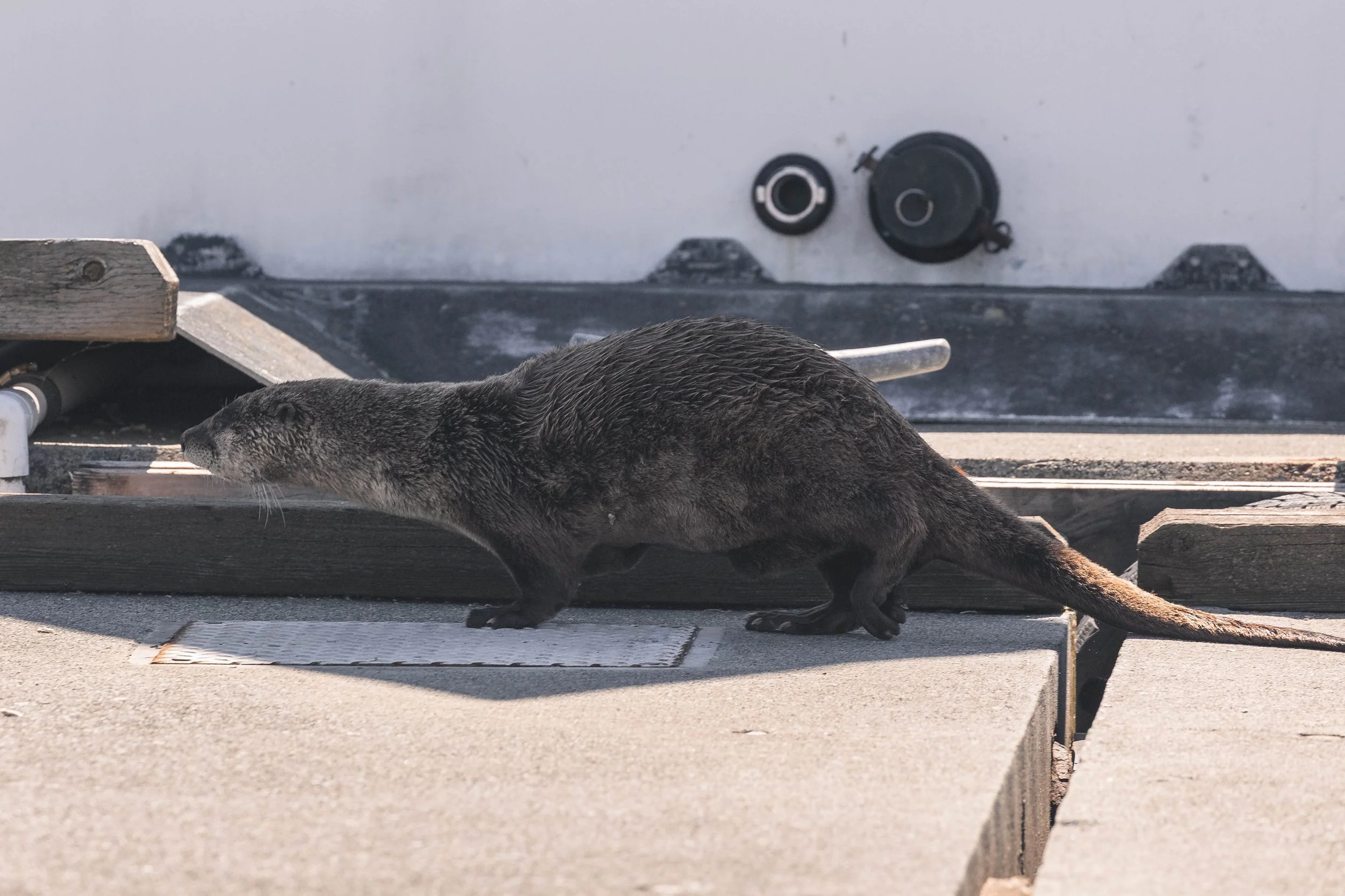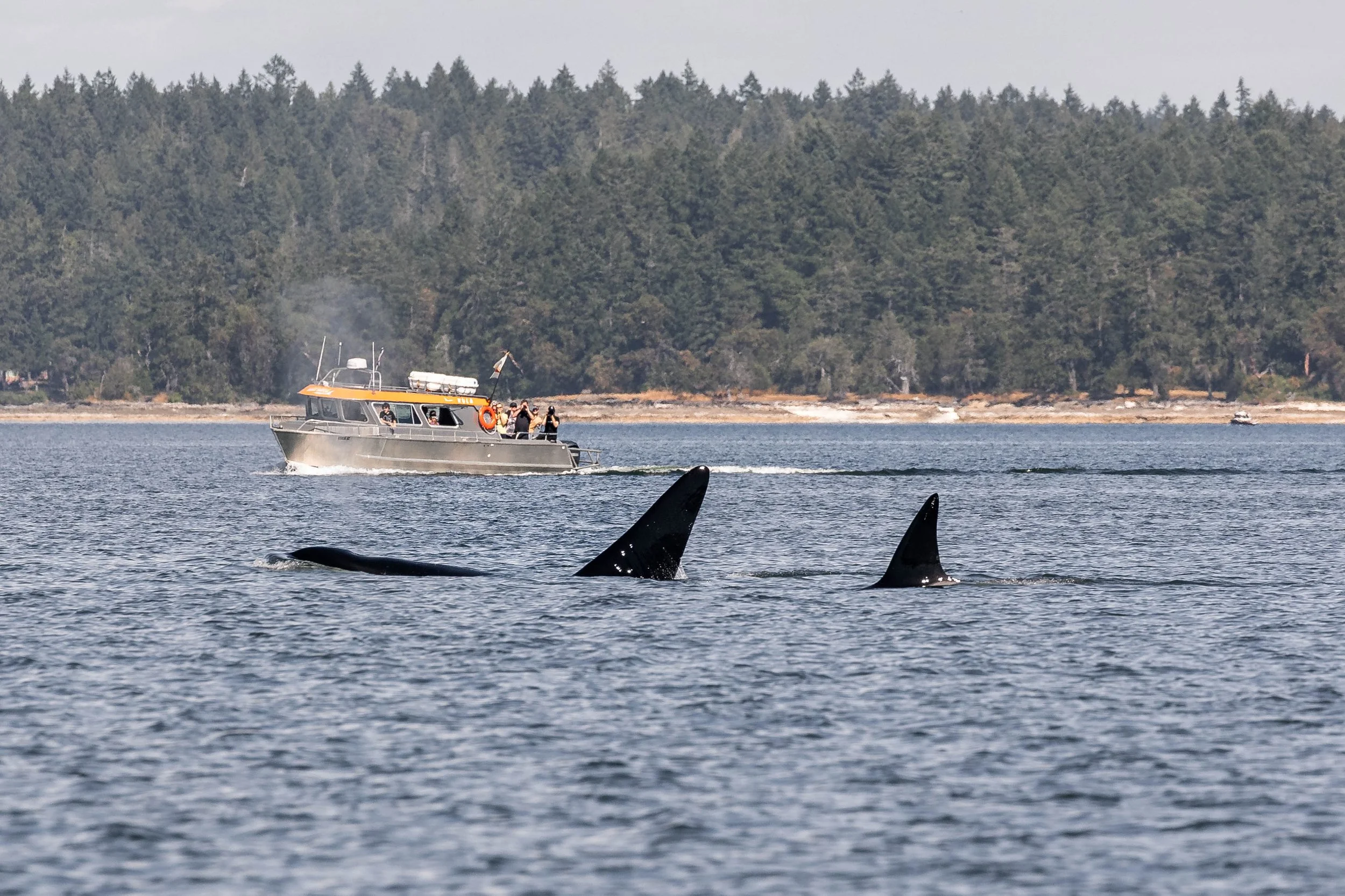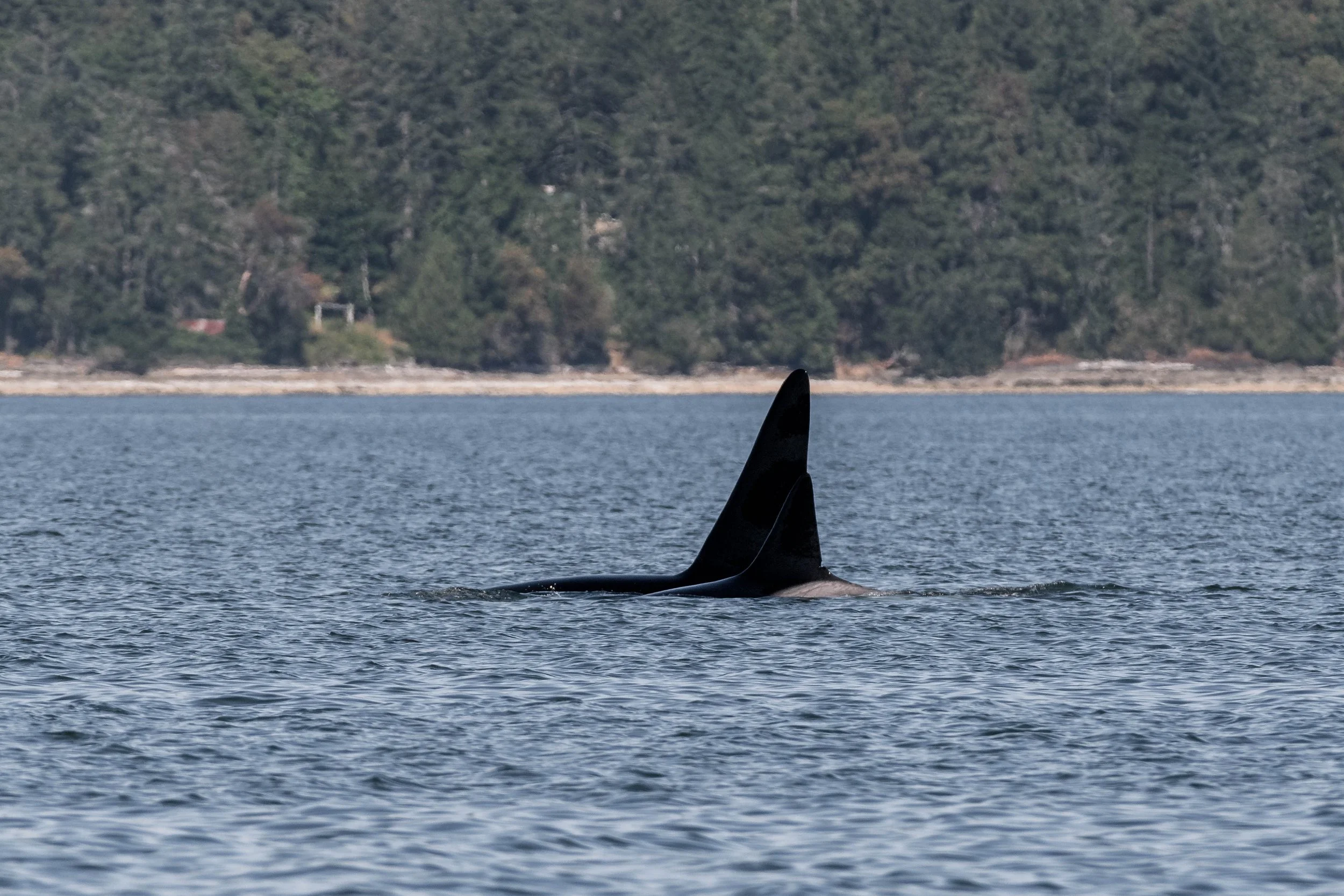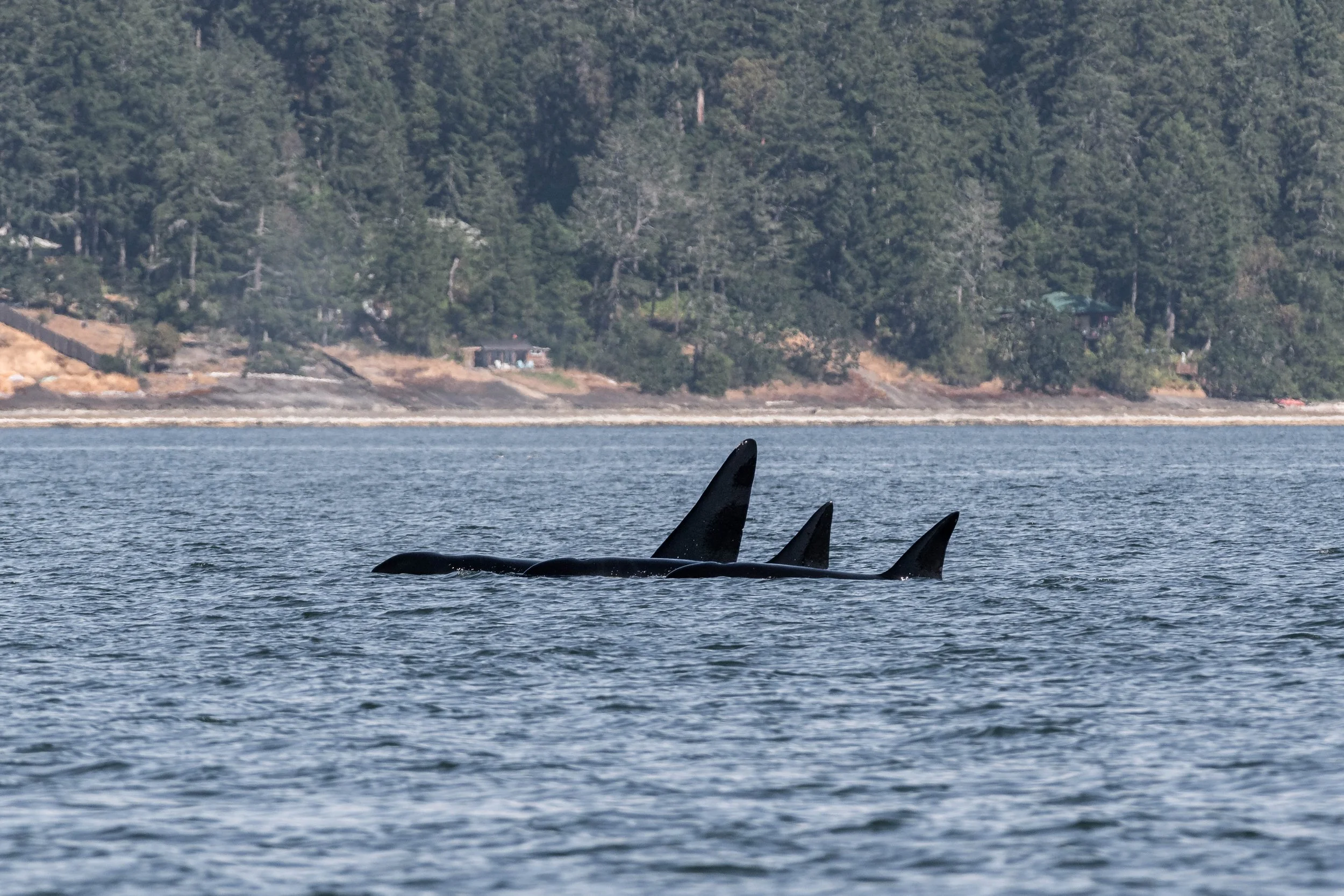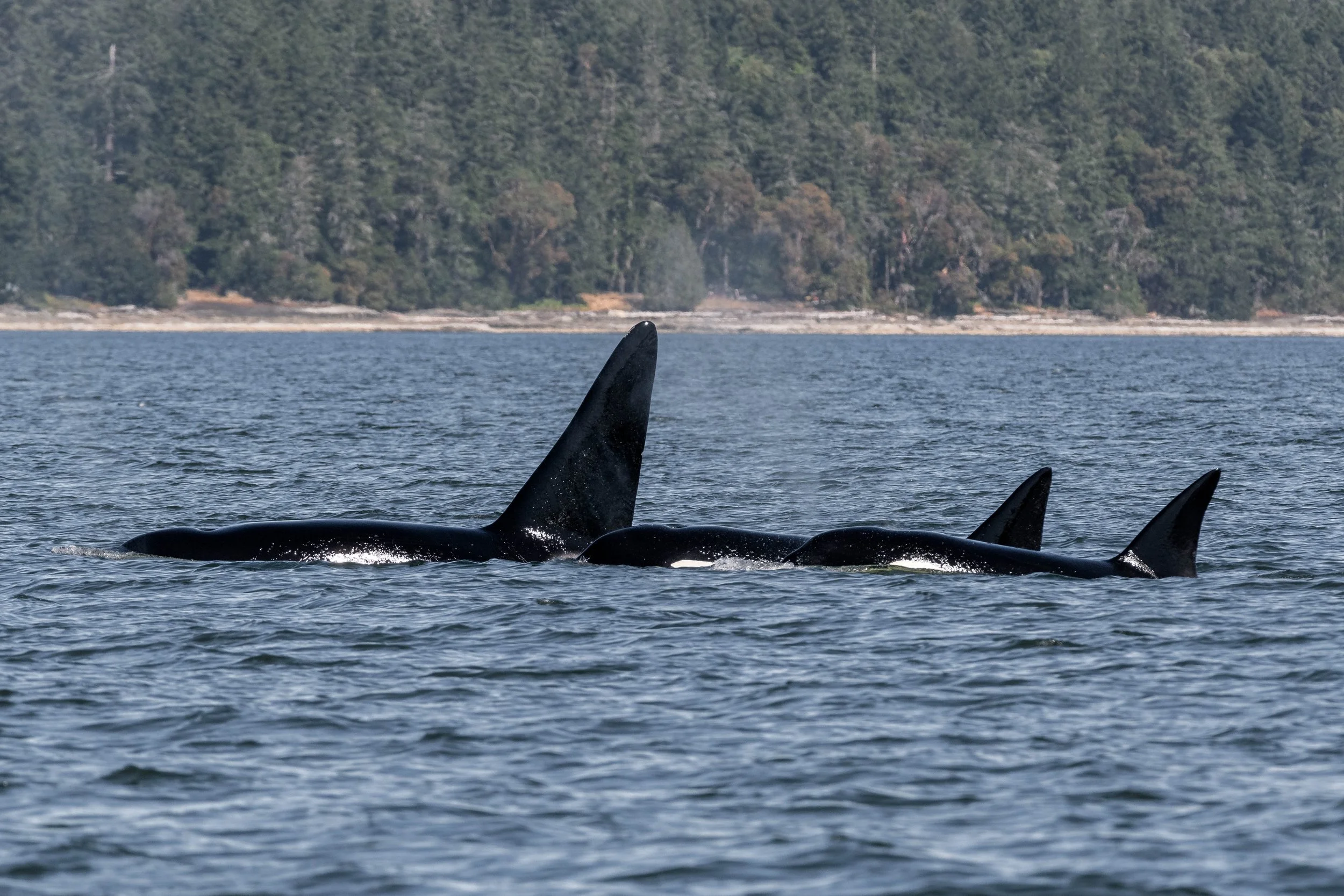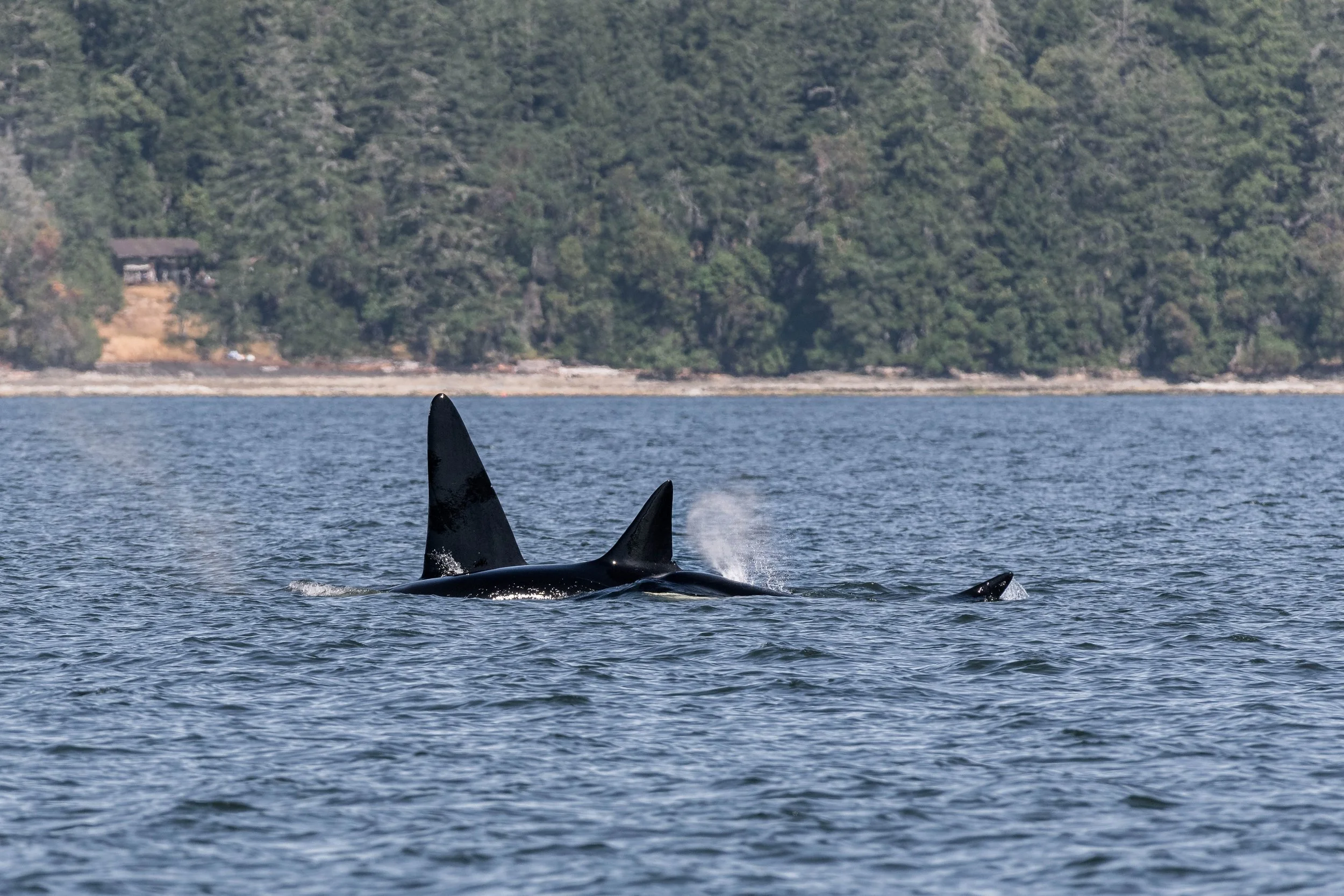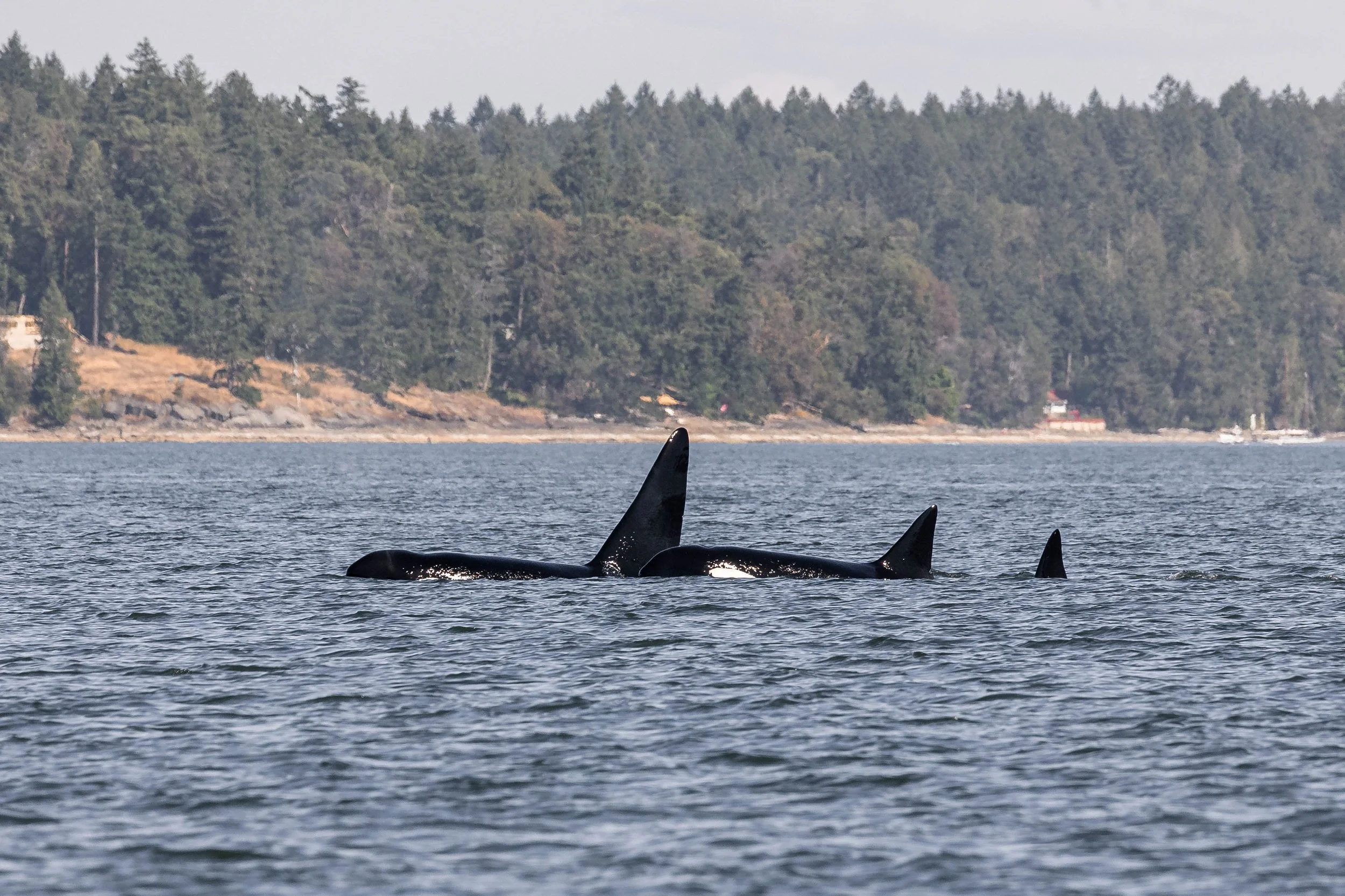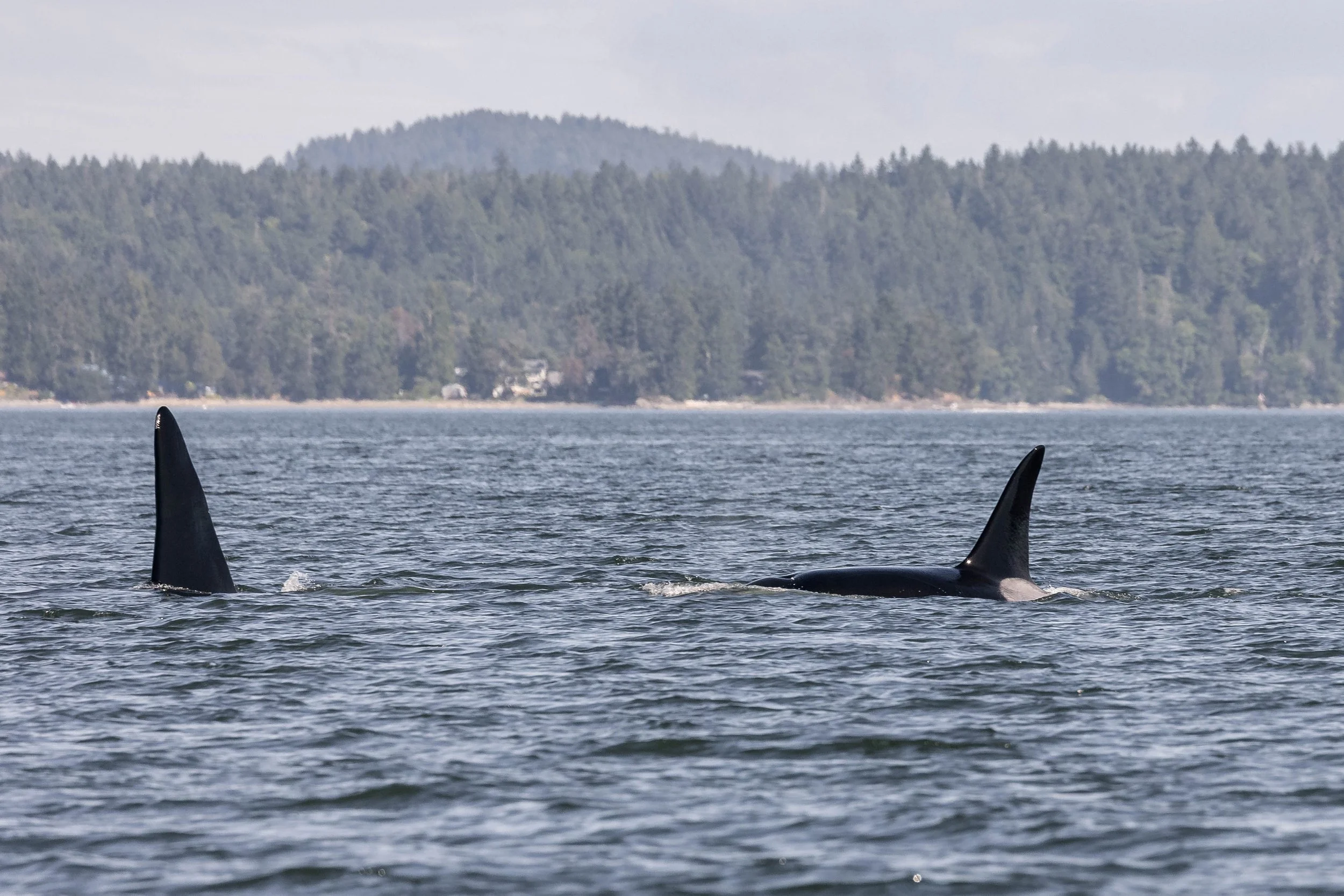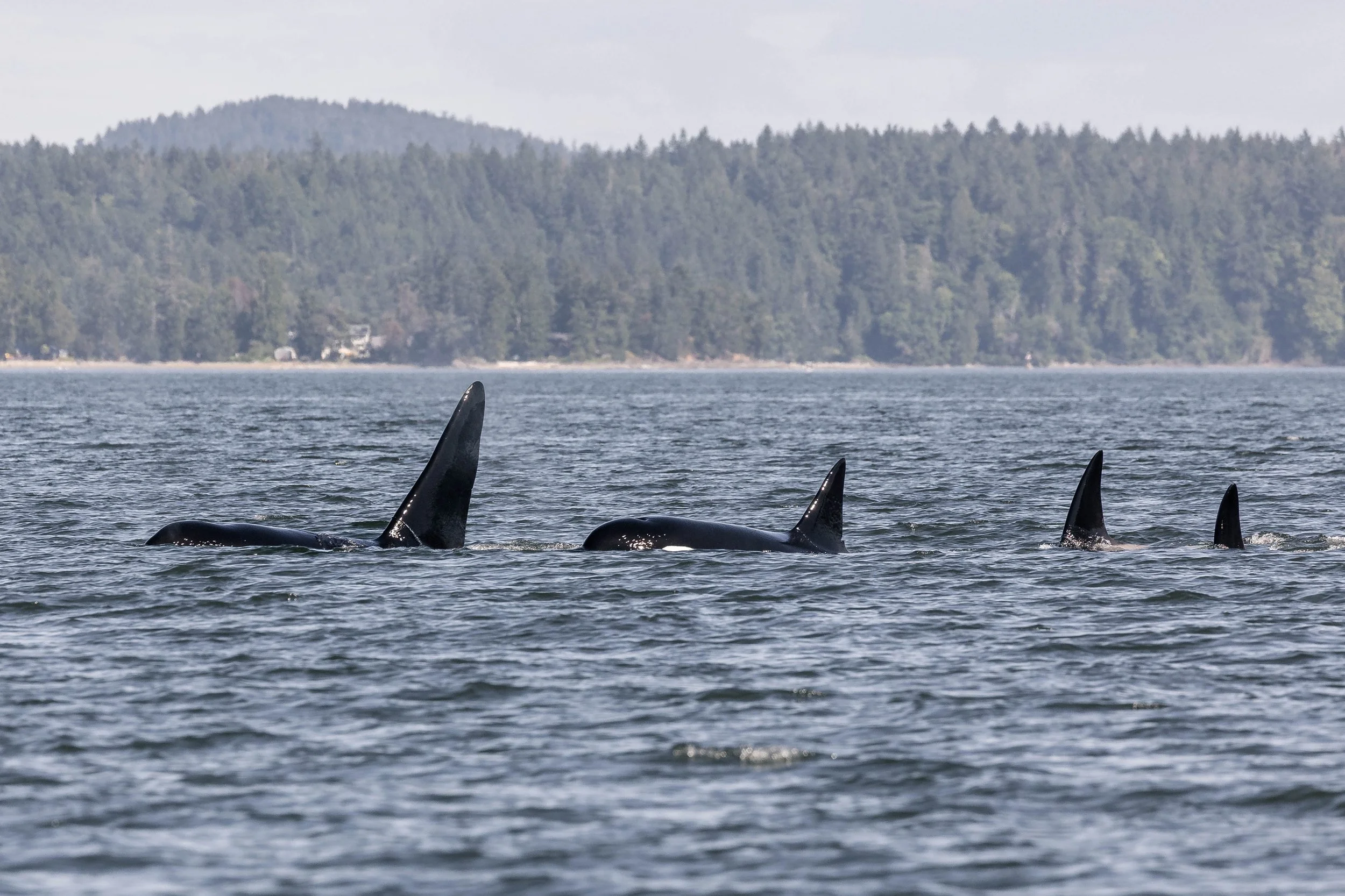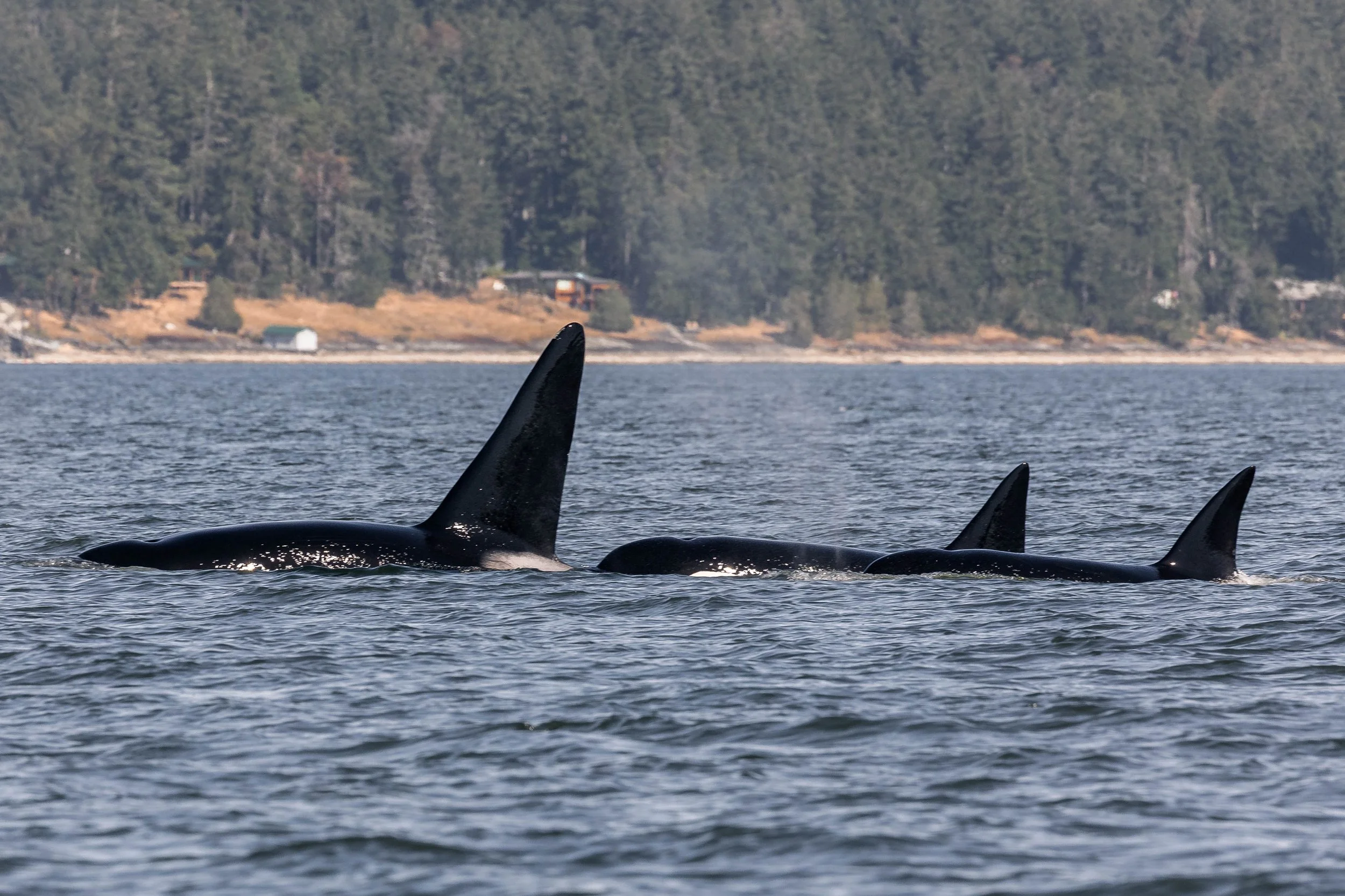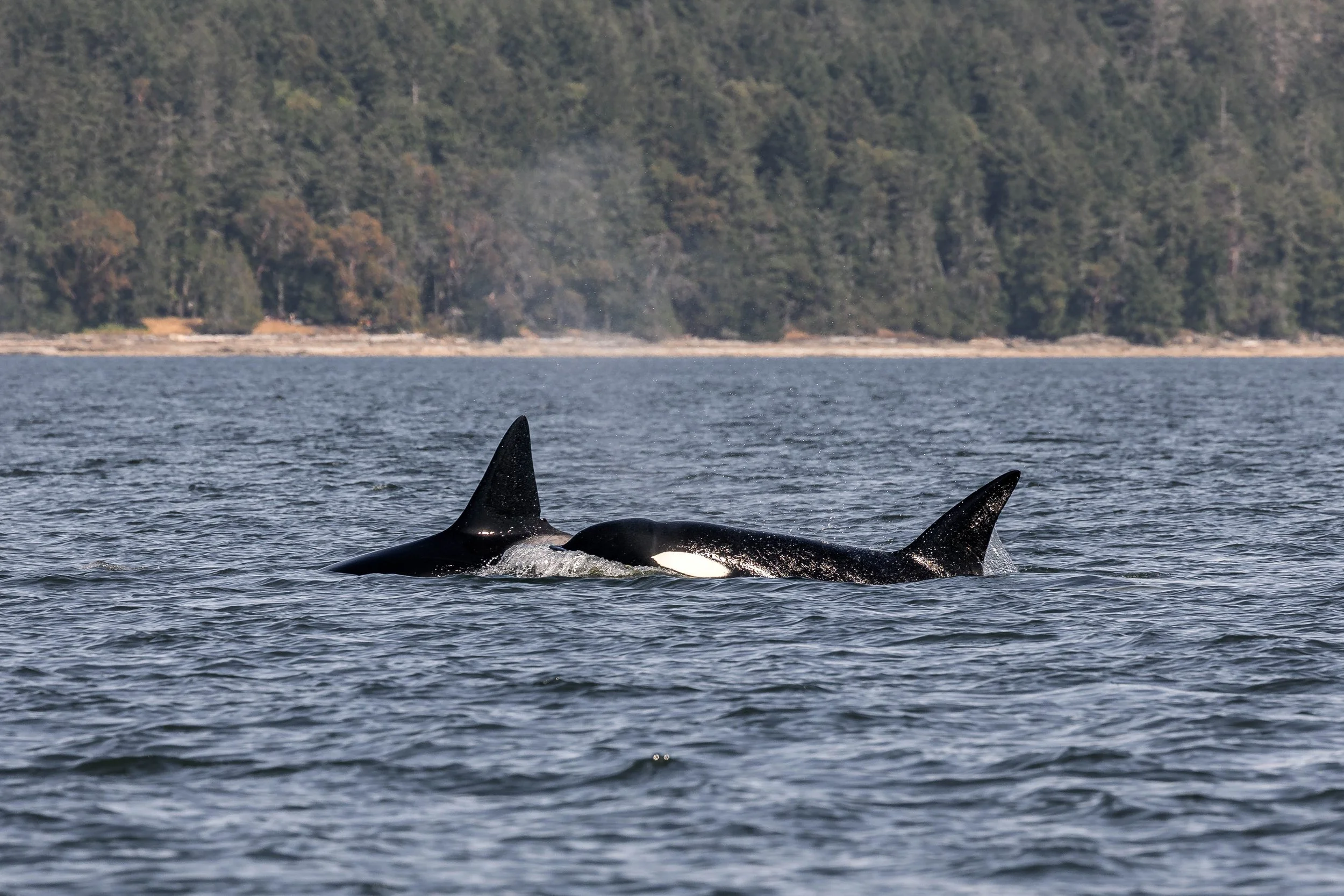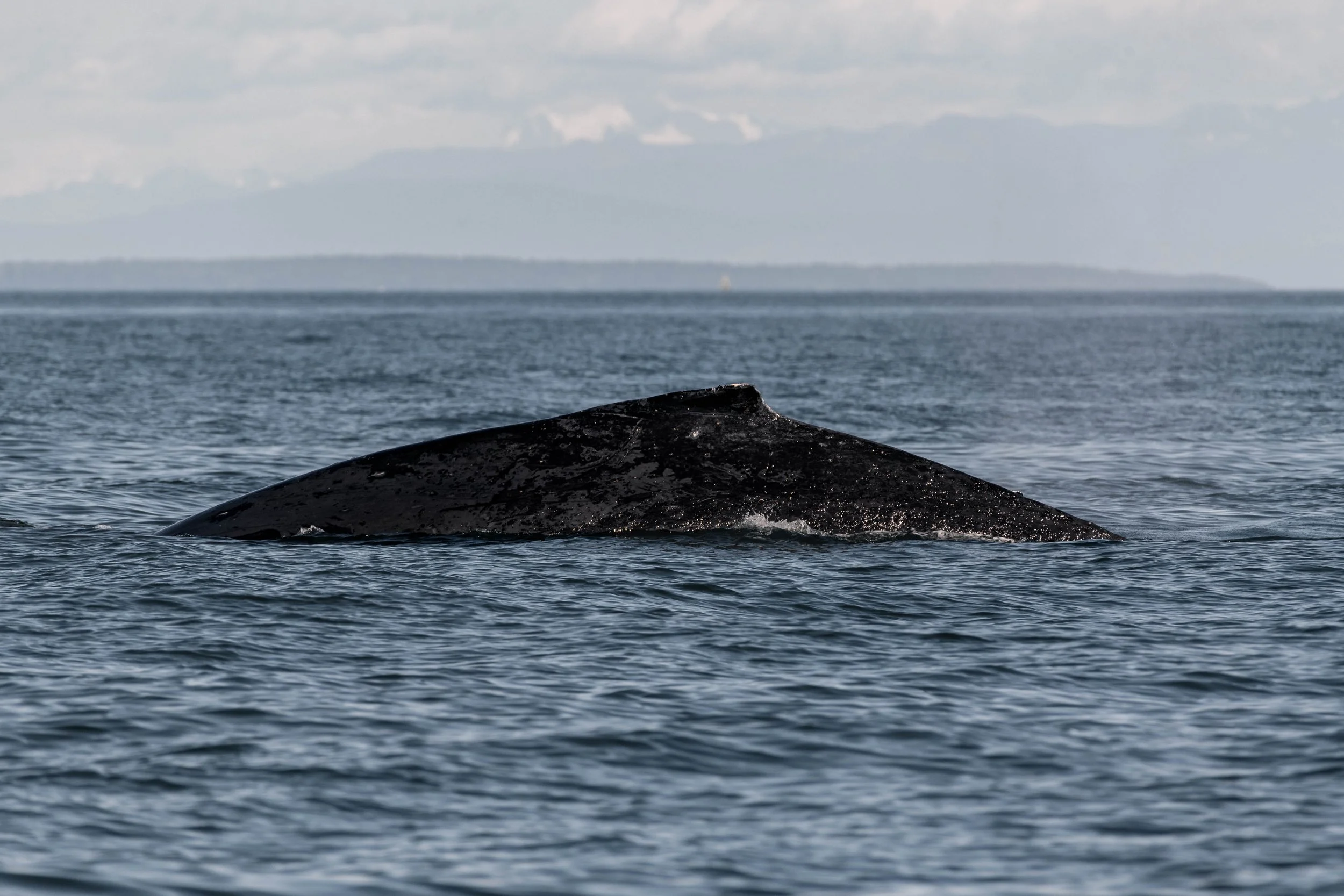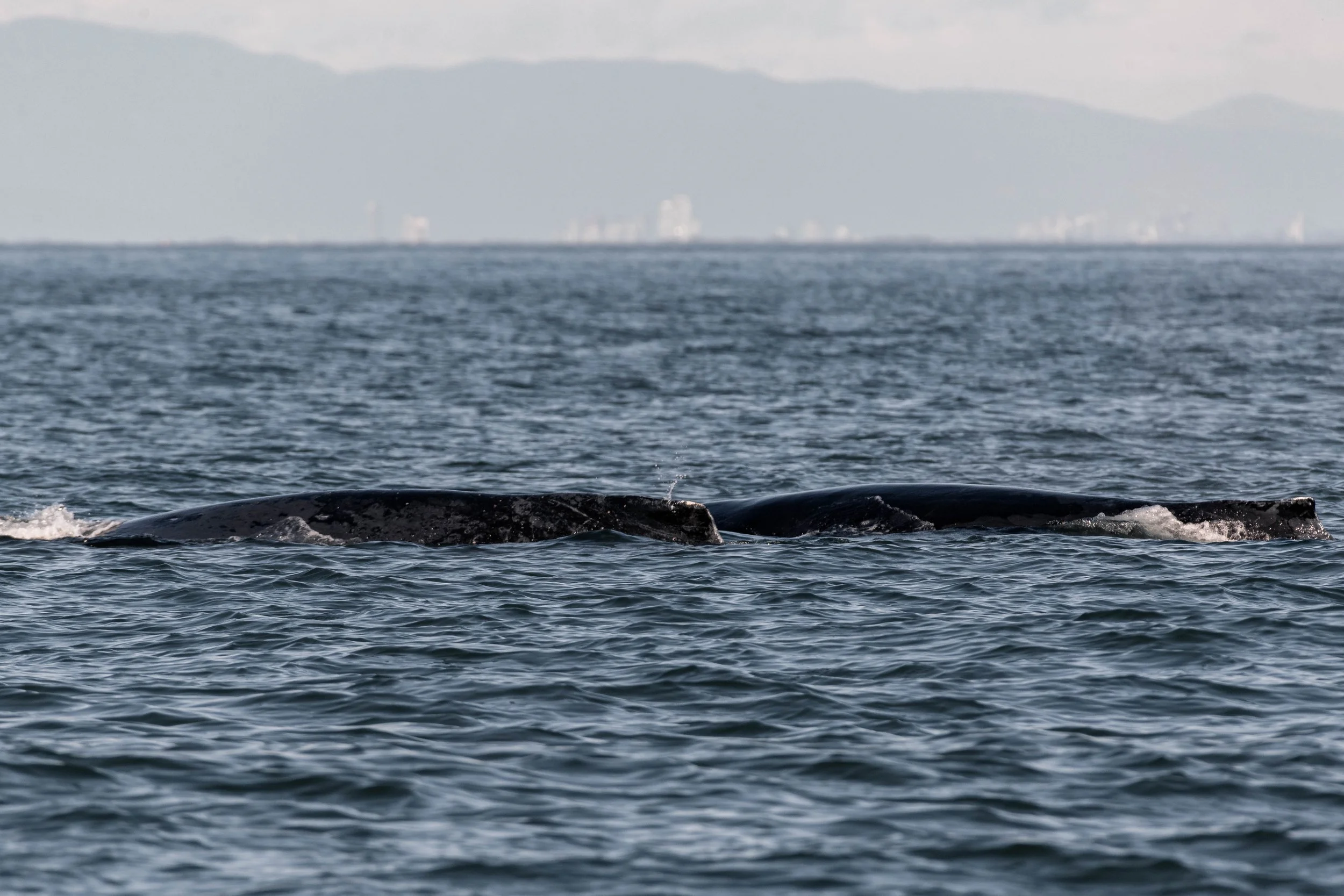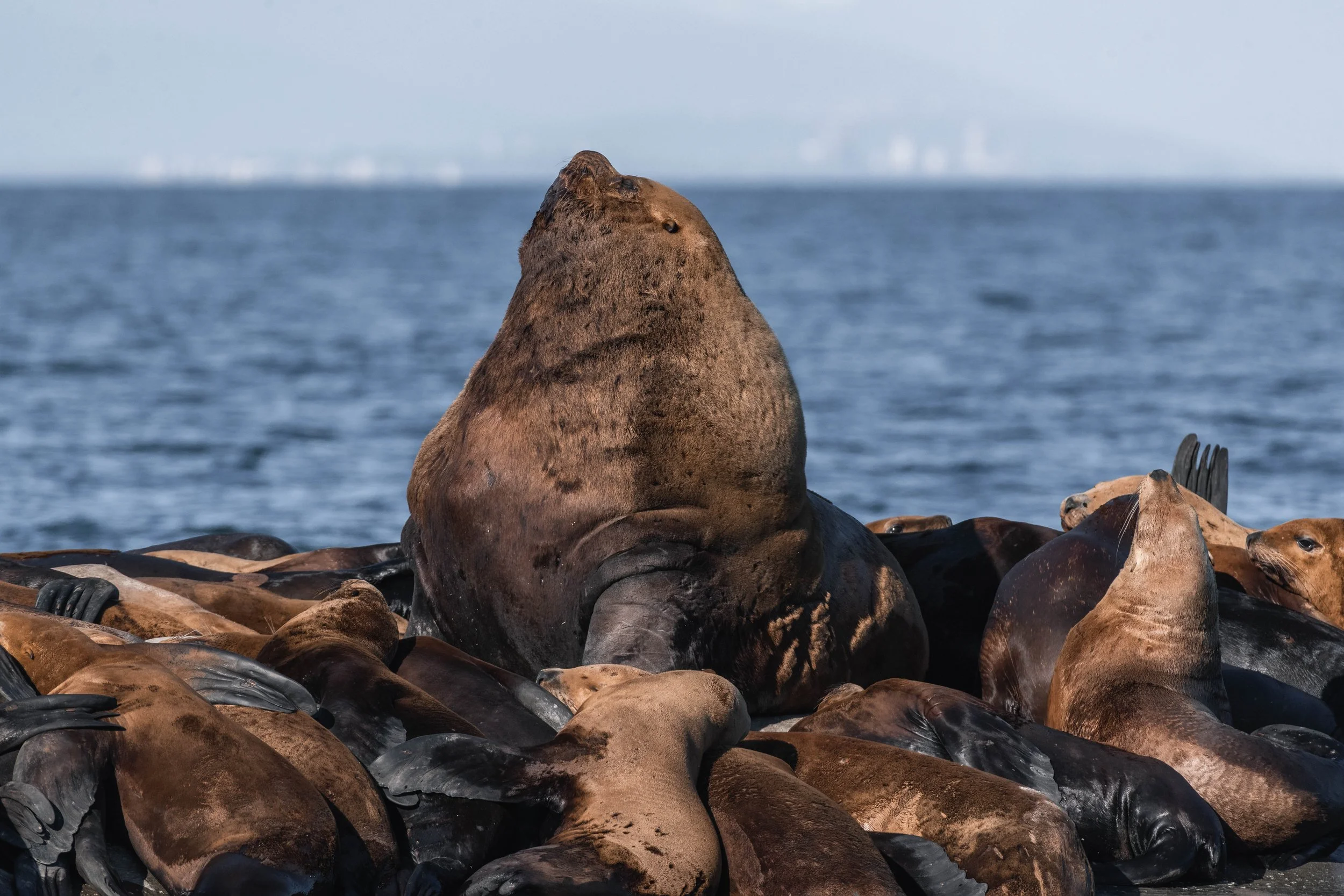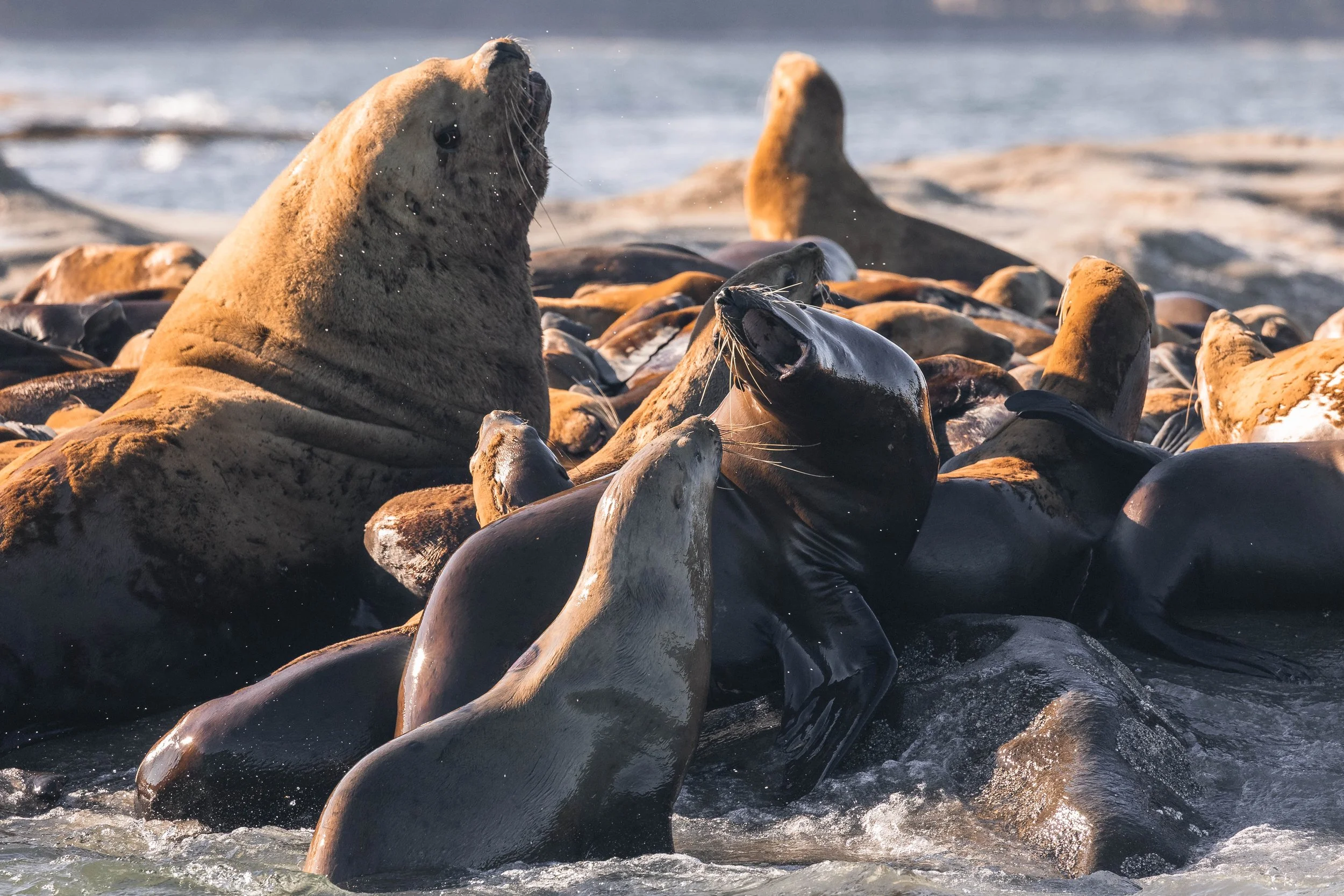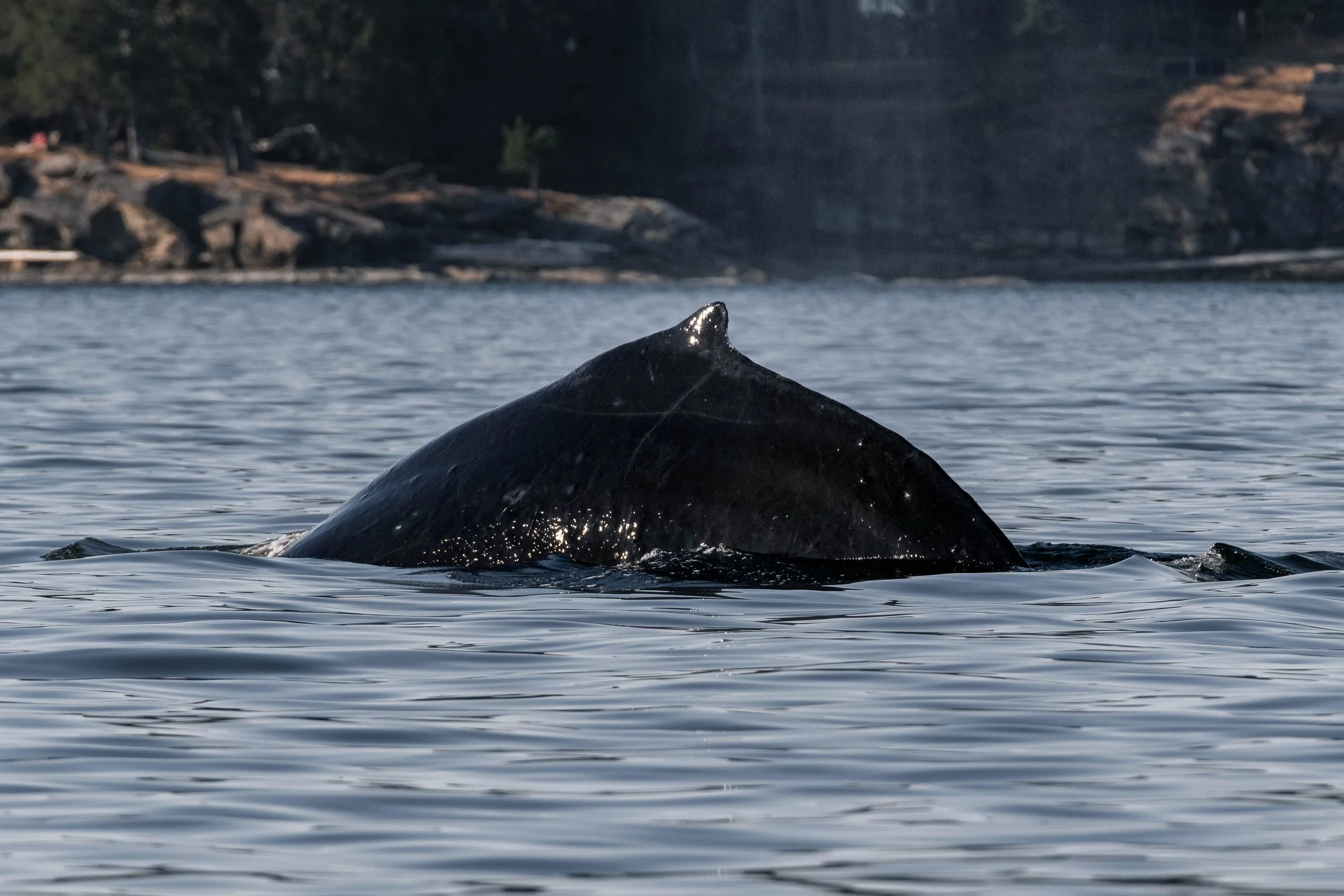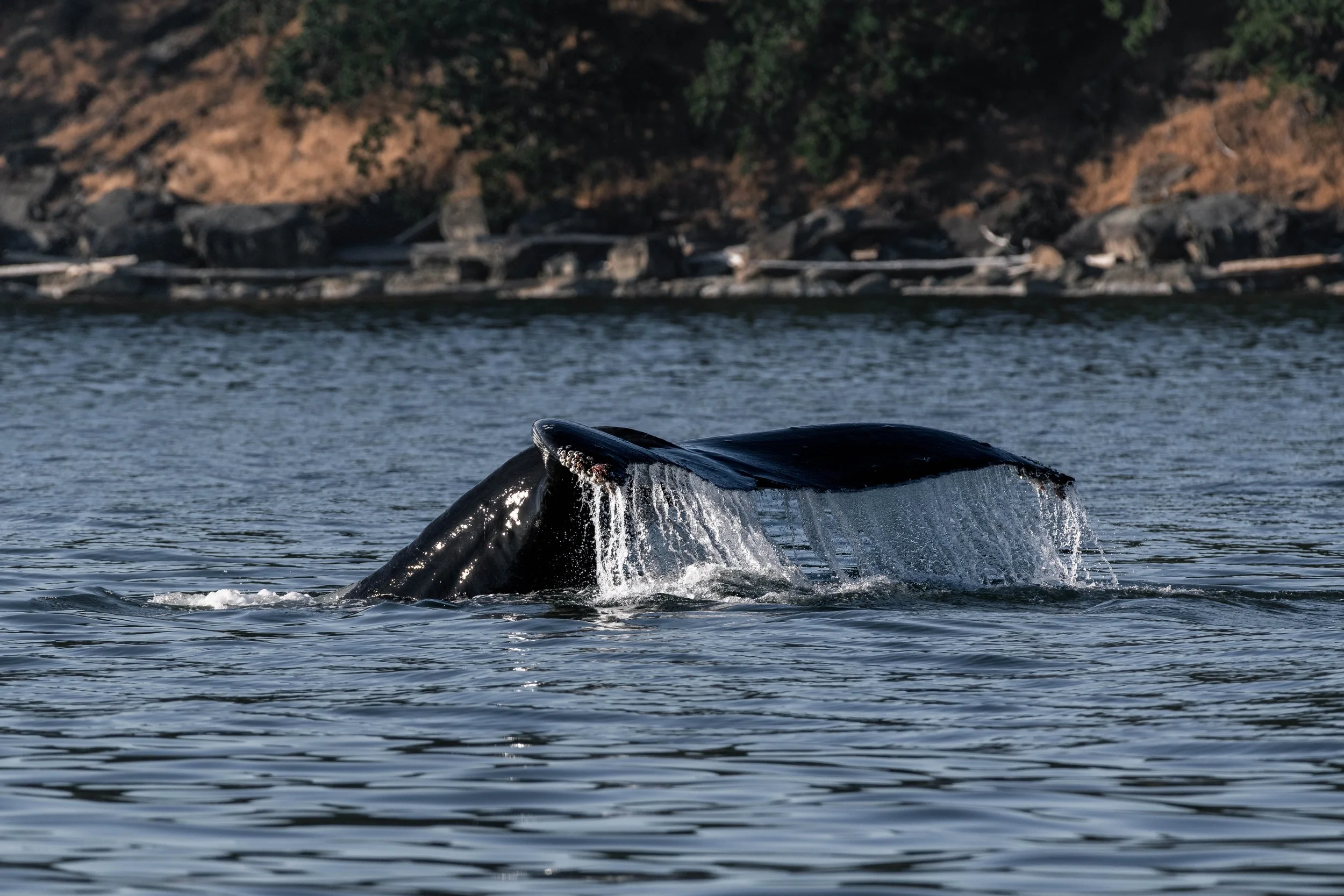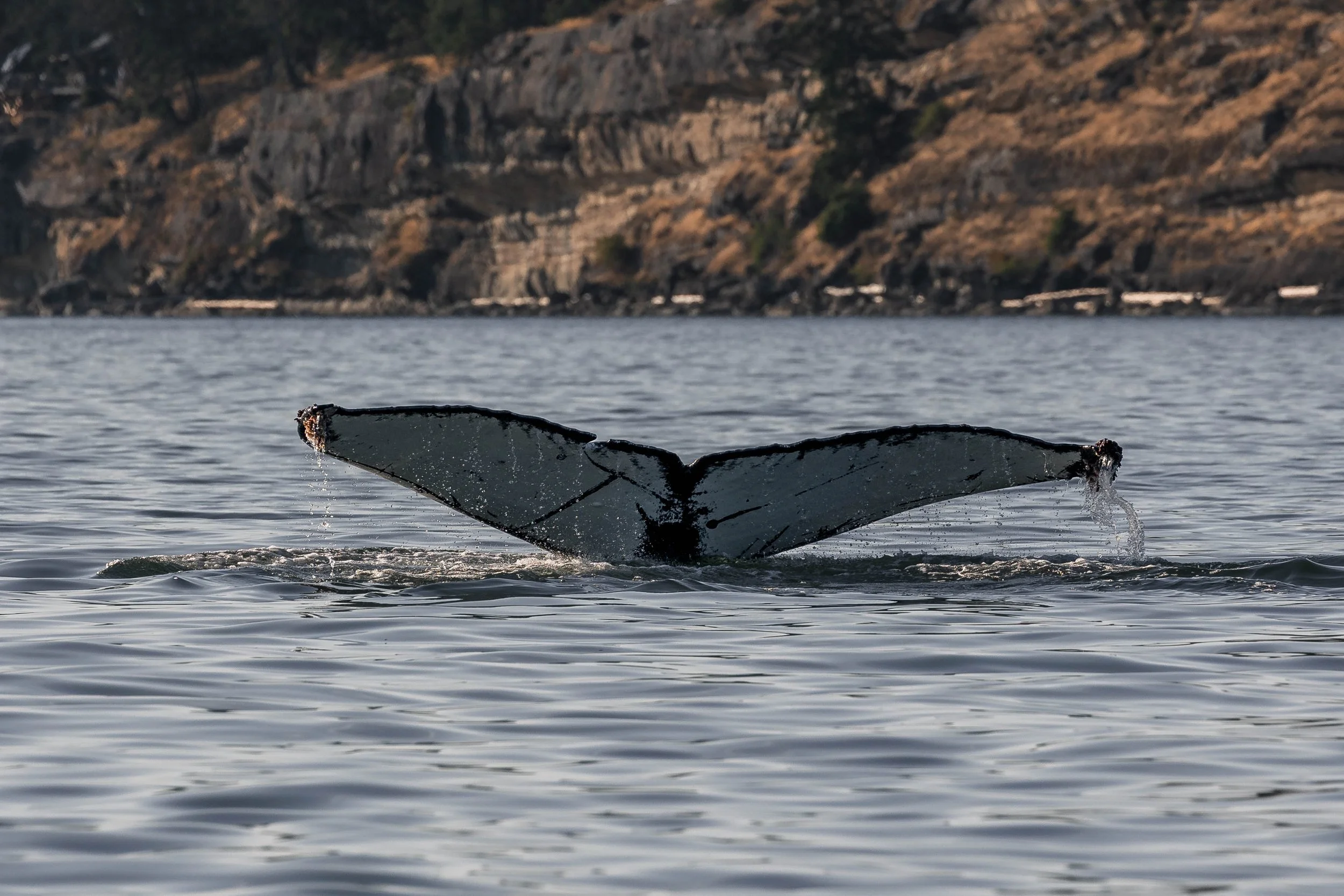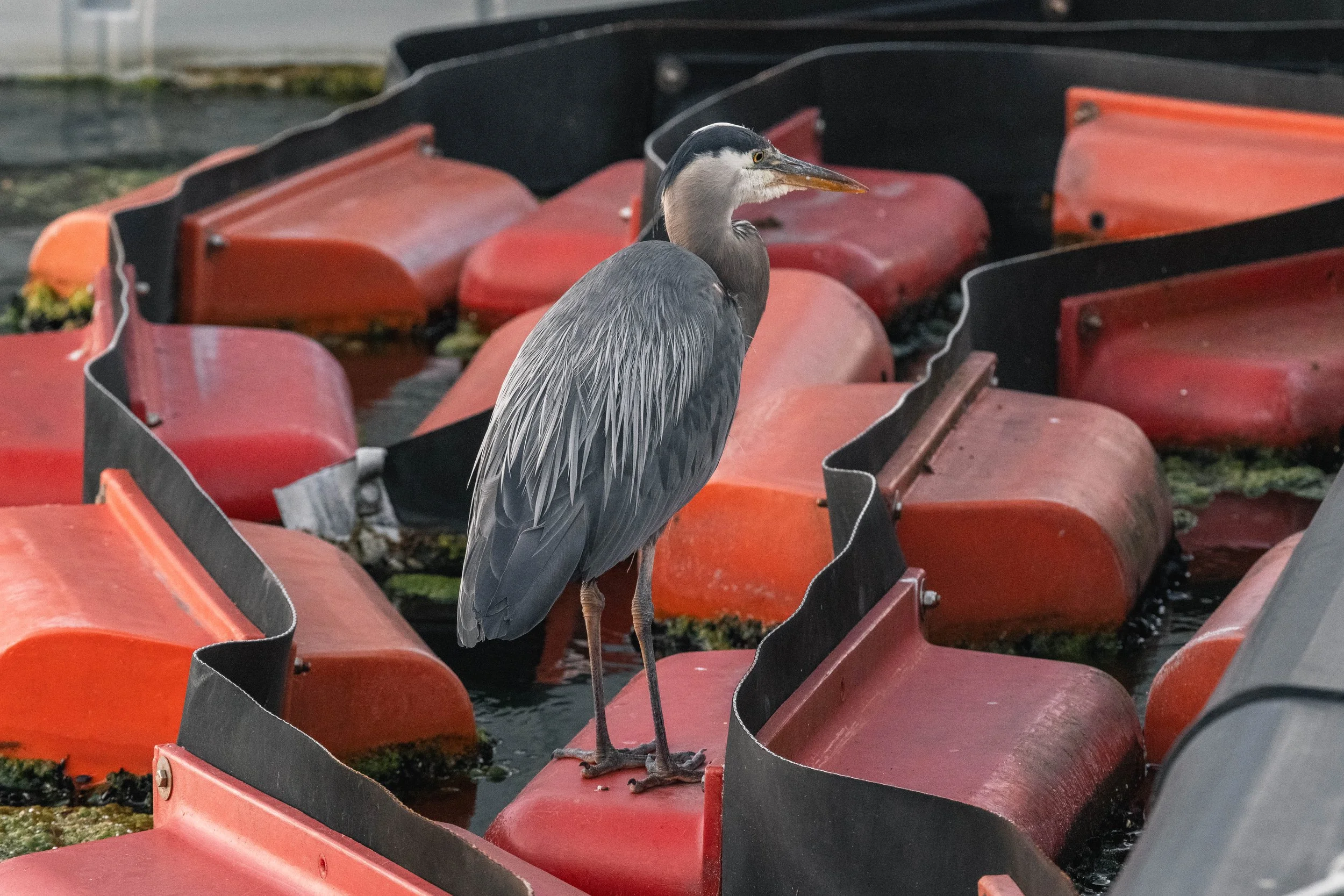July 14, 2025, 3:30 PM - T069s in Stuart Channel, Plus humpbacks all around!
Since we had spotted some orca heading north inside the Southern Gulf Islands during our morning tour, we decided to try our luck and see if we would be able to find them again during the afternoon. We headed south in search of them, and soon enough, we spotted them. The tall black dorsal fins of the orca can be easy to spot on the water, given that the adult males have theirs grow to a size of nearly 6 feet tall! These impressive structures aren’t held in place by bone or cartilage, but rather by densely interwoven connective tissue. If you are lucky enough to see orca, you’ll sometimes notice the wobble to their dorsal fin as they come to the surface! This afternoon, we recognized these orca as the T069s: a pod consisting of four members:
T069 Komox ♀ (~1974)
T069C Kye ♂ (1995)
T069E Kodiak ♂ (2004)
T069F Kin ♂ (2010)
The T069s seemed content with travelling during our time with them, having the group surfacing very close together each time. If they were looking for food, they would likely spread out a lot more, so that they covered more ground, increasing their chances of finding something. Transient Orca are mammal eaters, focusing mainly on pinnipeds like the Harbour Seals and Sea Lions, but also going for more difficult prey like porpoise, dolphins, and sometimes even larger Baleen Whales. Each of these animals needs to consume an impressive amount of food each day, with adult males averaging close to 500 pounds of food, and females closer to 300. This difference in food requirements is due to their size difference, with males growing much larger than the females.
Although males might be more impressive to look at, it’s the females that are more important in orca society, raising the calves and keeping their pod together throughout their lives. While females might leave their mom, males will typically stay with them for their whole lives. The T069s are actually a great example of this, since Komox has two other living offspring, T069A Kitimat and T069D. Both of her daughters have been very successful moms on their own, with 5 and 4 living offspring of their own, respectively. Seeing those numbers, you can now imagine why dispersal is important for Transient Orca, since 15 whales travelling together at the same time would be very easy to detect by their main prey, given their intelligence. So while the females leave to raise their calves, Komox will be travelling with her remaining boys for the foreseeable future. This isn’t a bad thing, though, as they will become a very cool pod to see once all the boys here grow to full size.
We enjoyed our time travelling with the T069s before we had to leave them behind, and we decided to head out into the Strait of Georgia in search of humpback whales. Once again, this proved to be the right choice as we spotted the big blows of a humpback whale soon after leaving Porlier Pass. Wait, was that two blows? This whale turned out to be Zig Zag (BCX1193), travelling with her 2025 calf, explaining the smaller blow next to the more obvious one from the full-grown mom. Although these two weren’t up to much, just resting at the surface without doing much in the way of dives. While this meant we got to spend lots of time at the surface with them, it also meant that we didn’t get any photos of their tails, the main way that humpback whales are identified. Not a worry, though, as Zig Zag has a unique enough dorsal fin for us to confirm it was her from that! It seems the time for baby humpbacks is now for us here around Nanaimo, as this is the 5th humpback whale baby that we have spotted on our tours so far this year!
Next stop after leaving Zig Zag and her calf to their travels was Stinky Rock, where there were a bunch of very boisterous sea lions spending time on the rocks. These, along with the nearby Harbour Seals, are always entertaining to watch, partially because of their interactions with each other. When you see them socializing amongst themselves, you understand why so much of the Transient Orcas’ behaviour and culture revolves around not being detected by them, since they are so intelligent! Although when you see them face plant into the water off the rocks, maybe it’s not so obvious.
We had one final encounter in store for us today, as we came across a pair of humpback whales that were travelling together inside the islands as well! These two were Geometry (BCZ0338) and Honu (BCX1856), who we actually also spotted on our morning tour, nearly 25 miles south of where we just spotted them! They covered that impressive distance in about 7 hours, which is a pretty good speed for a humpback. They were likely just transiting through the area until they found a nice area with lots of food where they would be able to rest and start feeding. Seeing them travelling through the islands was quite special, since we are usually more likely to run into them out in the more open waters of the strait. No matter, it was an amazing way to end the tour! Please enjoy the photos captured throughout the trip by Marine Naturalists Aly Kohlman and Hayleigh Hilbert, available below!
A River otter spotted on the docks before the tour. Photo by Hayleigh Hilbert.
T069C Kye and T069F Kin surfacing together with our Zodian watching from behind. Photo by Aly Kohlman.
T069C Kye and T069F Kin surfacing with Kula in the background. Photo by Hayleigh Hilbert.
Can you spot both whales in this photo? T069 Komox is surfacing right in front of her son, T069C Kye. Photo by Aly Kohlman.
T069C Kye, T069 Komox, and T069F Kin surfacing together. Photo by Aly Kohlman.
A family photo with the T069s! T069C Kye, T069 Komox, T069F Kin, and T069E Kodiac. Photo by Aly Kohlman.
T069C Kye, T069 Komox, T069F Kin surfacing together. Photo by Aly Kohlman.
T069 Komox surfacing with T069F Kin close behind. Photo by Aly Kohlman.
A close knit photo of the T069s. From front to back: T069C Kye, T069 Komox, T069F Kin, and T069E Kodiac. Photo by Aly Kohlman.
T069C Kye, T069 Komox, and T069F Kin. Photo by Aly Kohlman.
T069C Kye surfacing behind mom, T069 Komox. Photo by Hayleigh Hilbert.
T069C Kye, T069 Komox, and T069F Kin all surfacing together. Photo by Hayleigh Hilbert.
Brothers T069C Kye and T069E Kodiak surfacing together. Photo by Hayleigh Hilbert.
T069F Kin showing off his eye patch. Photo by Hayleigh Hilbert.
T069C Kye in the lead, T069 Komox, T069F Kin, and T069E all together. Photo by Hayleigh Hilbert.
A great look at T069C Kye, T069 Komox, and T069F Kin. Photo by Hayleigh Hilbert.
T069F Kin showing off their eye patch just behind mom, T069 Komox. Photo by Hayleigh Hilbert.
Family photo with T069C Kye in the back, T069 Komox in the middle, and T069F Kin in the front. Photo by Hayleigh Hilbert.
Zigzag surfacing with in the waves. Photo by Aly Kohlman.
A great look at Zigag as she surfaces. Photo by Aly Kohlman.
Zigzag surfacing with her calf just behind. Photo by Aly Kohlman.
Zigzag preparing to dive with her calf just behind her. Photo by Hayleigh Hilbert.
Canada Goose spending time on the rocks. Photo by Hayleigh Hilbert.
A young sea lion doing a balancing act on a angry Stinky Steve. Photo by Aly Kohlman.
A itchy Steller Sea Lion. Photo by Aly Kohlman.
You can see the size difference betwee the adult male Steller Sea Lion and the younger ones. Photo by Aly Kohlman.
Fighting amongst the Steller Sea Lions on Stinky Rock. Photo by Hayleigh Hilbert.
A Steller Sea Lion spending time in the water near the haul out. Photo by Hayleigh Hilbert.
Harbour Seals on the Stinky Rock. Photo by Hayleigh Hilbert.
Geometry going for a dive. Photo by Aly Kohlman.
Geometry creating a fluke waterfall. Photo by Aly Kohlman.
The underside of Geometry’s fluke. Photo by Aly Kohlman.
Honu going for a dive. Photo by Hayleigh Hilbert.
Geometry going for a dive. Photo by Hayleigh Hilbert.
Geometry arching for a dive. Photo by Hayleigh Hilbert.
A great blue heron back at the dock. Photo by Aly Kohlman.

